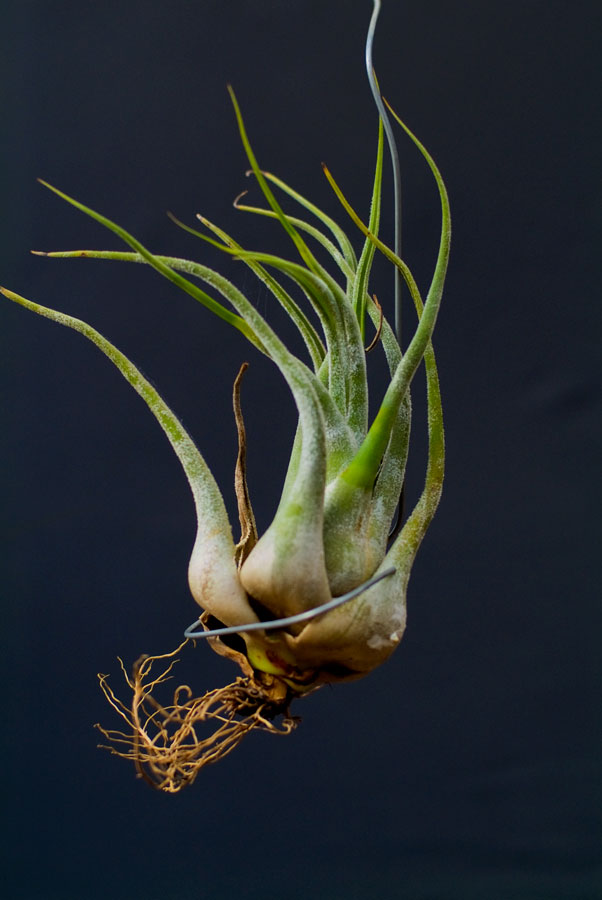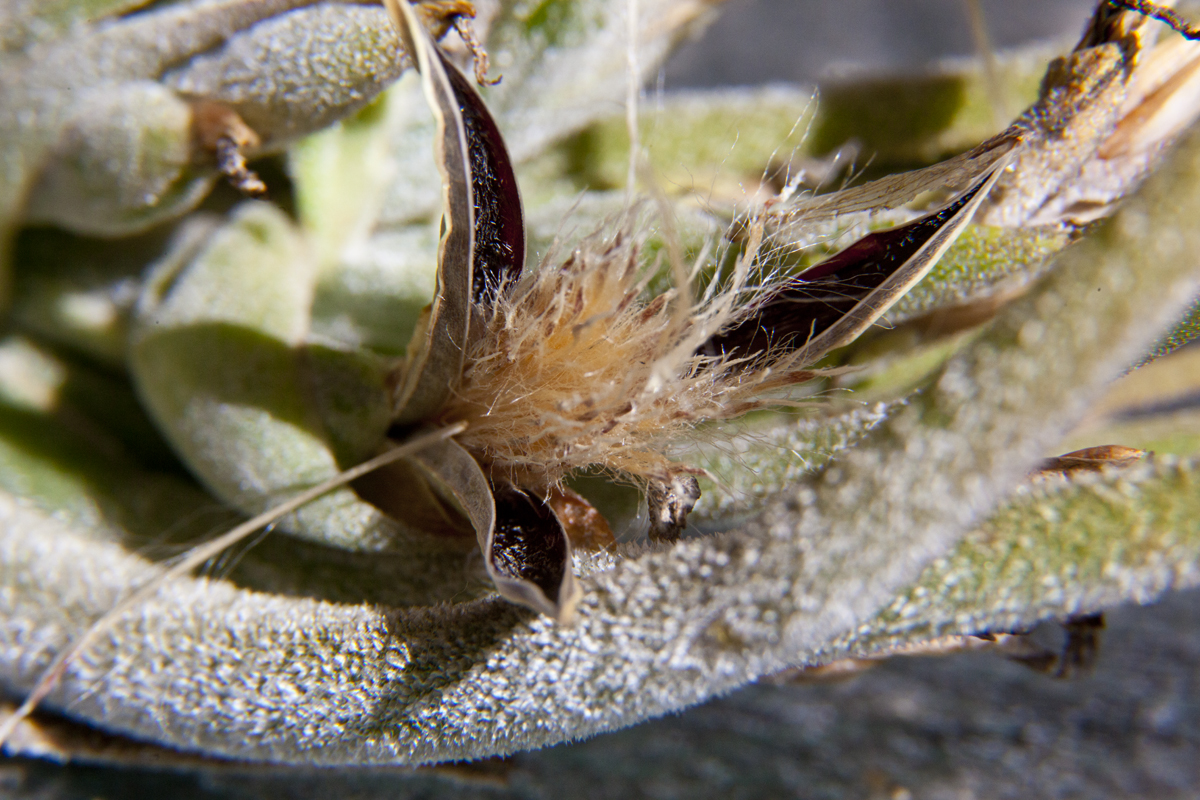A
catalogue of Bromeliads used for various projects by - Lloyd Godman
This
is a catalogue of bromeliads used by Lloyd godman for his various installations
and photosynthesis projects - the collection of pants he accessed in
New Zealand from 1996 - 2004 was collected from a wide range of sources,
while most were brought from Greens Bromeliads, some were also donated
by the Dunedin Botanical Gardens. Later in 2004 these plants were either
sold or given away with his move to Australia.
Lloyd is at present re-establishing his collection where he now lives
in Melbourne.
A
Lexicon of Bromeliads: A
resource by Lloyd Godman
Genus - Tillandsia: Sub-Family - Tillandsioideae: Family - Bromeliad
Tillandsias
are regarded as true air plants and as such are among the most unusual
of the Bromeliad family. They range from bulbous forms and grass like
structures to silver tufted masses. Typically they grow where there
is free air movement like high treetop environments or across open rock
faces, and often they are heavily covered in silver trichomes that help
reflect the high levels of sun light they receive in these locations.
While some tolerate temperatures as low as 5 degrees C (40 degrees F),
or even lower, most prefer temperatures of around 10-32 degrees C (50-32
degrees F). While they require high levels of humidity, they need to
dry out quickly and completely between misting or watering. As the trichome
scales open to absorb moisture and close to retain it, it is important
that the plants are given time to dry out and most plant deaths occur
because of over watering.
Plants are marked NZ for those collected in New Zealand - or Aust - for the new plants collected since coming to Australia
| Tillandsia seleriana - (sel-er-i-a'-na) - (named in honor of Seler, plantsman) |
|
|


I harvested seed from Tillandsia seleriana - natuarlly it blows away on the wind - I pollinated this last year (2012) and now 9 months later Dec 2012 the seed is ready to germinate - so I sprinkle it on old nylon stockings stretched over a container filled with water and mist every day.
.
|
Native distribution: A native of Southern Mexico and south to Honduras where it grows as an epiphyite in a range of situations from damp forests and dry pine and oak woods at altitudes from 250 - 1,600m (750 to 5,500ft)
Habit: The plant is one of the more extreme bulb type Tillandsia. As it matures the plant forms what looks like a bloated bulb, where the leaves grow some what similar to the layers of an onion, with the new leaves emerging from the center.
Foliage: The leaves are vibrant green but covered with a heavy dusting of silver trichomes. In shape they are very wider at the base and taper off to a point at the end.
Flowers: The inflorescence is branched and an attractive bright red. The violet flowers rise from the center.
Cultivation: The plant can adapt to a range of situations from some direct hot sun to shade. If the plant is in a hot situation and and the base of the leaves burn, leave them on as the dead tissue will protect the tissue on the leaf below. During cold weather, ensure that water does not sit in the base of the wide leaves as this can lead to damage and rot.
|
|